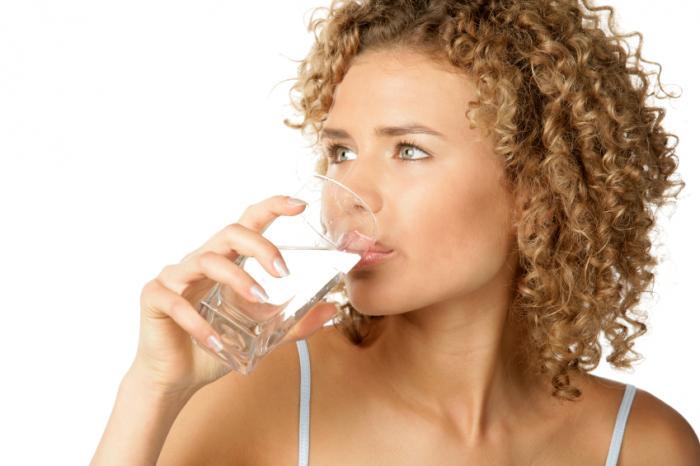
The Institute of Medicine recommend that men achieve a daily fluid intake of around 3 liters and that women take in 2.2 liters.
The Academy of Nutrition and Dietetics recommends that adults consume 20-35 grams of fiber a day. Americans tend to consume only 15 grams a day on average (2). People often eat too many refined and processed foods from which the natural fiber has been removed. If you are prone to constipation, limit foods that are salty, have added sugars and sweeteners, and have little or no fiber, such as high-fat foods like ice cream, cheese, meat, chips, cold cuts, cakes, cookies, crackers, and other processed foods. Fiber promotes stool regularity and vacates the body with impressive efficiency. Try to include more high-fiber foods in your meals, such as those listed below, as well as plenty of fruits and vegetables that are naturally hydrating (apples, berries, grapefruits, oranges, melons, peaches, pears, green leafy vegetables, squash):
Examples of Foods That Have Fiber |
|
| Beans, cereals, and breads | Fiber |
|---|---|
| ½ cup of beans (navy, pinto, kidney, etc.), cooked | 6.2–9.6 grams |
| ½ cup of shredded wheat, ready-to-eat cereal | 2.7–3.8 grams |
| ⅓ cup of 100% bran, ready-to-eat cereal | 9.1 grams |
| 1 small oat bran muffin | 3.0 grams |
| 1 whole-wheat English muffin | 4.4 grams |
| Fruits | |
| 1 small apple, with skin | 3.6 grams |
| 1 medium pear, with skin | 5.5 grams |
| ½ cup of raspberries | 4.0 grams |
| ½ cup of stewed prunes | 3.8 grams |
| Vegetables | |
| ½ cup of winter squash, cooked | 2.9 grams |
| 1 medium sweet potato, baked in skin | 3.8 grams |
| ½ cup of green peas, cooked | 3.5–4.4 grams |
| 1 small potato, baked, with skin | 3.0 grams |
| ½ cup of mixed vegetables, cooked | 4.0 grams |
| ½ cup of broccoli, cooked | 2.6–2.8 grams |
| ½ cup of greens (spinach, collards, turnip greens), cooked | 2.5–3.5 grams |
Source: U.S. Department of Agriculture and U.S. Department of Health and Human Services, Dietary Guidelines for Americans, 2010.
High-fiber foods pack fewer calories per pound compared to low-fiber foods, such as meat and processed foods so common in a Western diet. A diet high in insoluble fiber from whole grains, beans, vegetables and vegetable skins, seeds and nuts also provides a feeling of satiety without contributing many calories.
Always increase your water consumption as you increase fiber in your diet:
- Drinking water and other liquids, such as fruit and vegetable juices and clear soups, may make fiber in the diet more effective in normalizing bowel function and maintaining regularity.
- The Institute of Medicine states that an adequate intake (AI) for men is roughly 3 liters (about 13 cups) of total beverages a day and for women 2.2 liters (about 9 cups) of total beverages a day. Another common recommendation is to drink at least eight 8-ounce glasses of water or other fluid every day (about 1.9 liters). But some adults may need more or less, depending on how healthy they are, how much they exercise, and how hot and dry the climate is.
- To calculate how many ounces of water your body needs daily while at rest (working at a desk, puttering around the house, reading), divide your body weight in half. If you weigh 200 pounds, you would need 100 ounces of water per day if you’re not doing anything strenuous. This is the bare minimum water requirement for your body to function properly. If you are working out, hiking, at a high altitude, or outdoors a great deal, you should drink more than 100 ounces. Add another liter of water with 1/2 teaspoon of sea salt to ensure proper electrolyte replenishment.
- A health care provider can offer addditional advice about how much a person should drink each day based on the person’s health and activity level and where the person lives.
You may need to drink more water than usual if you:
- Exercise intensely, especially in a hot climate.
- Are outdoors a great deal.
- Sweat profusely.
- Are sick, such as with a fever, flu, or have a health problem like a urinary tract infection.
- Are pregnant or breast-feeding.
The easiest way to know if you’re drinking enough fluid:
- Observe the color of your urine. If you’re drinking enough water, your urine will be clear or pale yellow. A darker yellow means you aren’t drinking enough water.
- People who drink enough water also usually have soft bowel movements. Hard bowel movements or constipation can be signs that you aren’t getting enough water.
If you have any health problems, always talk to your doctor before increasing the amount of water you drink. You may need to limit your fluids if you have certain health concerns, such as kidney problems or heart failure.
Reference:
- Dietary Guidelines for Americans, 2010. U.S. Department of Agriculture and U.S. Department of Health and Human Services.
- Slavin JL. “Position of the American Dietetic Association: health implications of dietary fiber.” Journal of the American Dietetic Association. Volume 108:1716–1731. 2008.
Comments on this entry are closed.